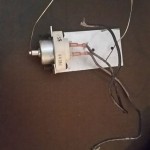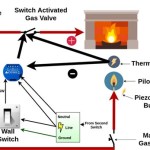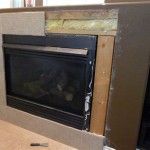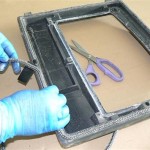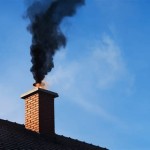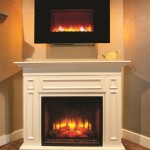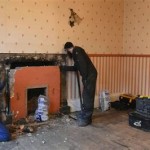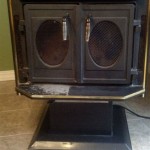Cost To Put In A Fireplace: A Comprehensive Guide
Installing a fireplace can significantly enhance the ambiance and value of a home. However, understanding the financial implications beforehand is crucial for effective budgeting. The total cost to install a fireplace varies widely based on several factors, including the type of fireplace, the installation complexity, necessary modifications to the existing structure, and local labor rates. This article provides a detailed overview of the cost components involved in fireplace installation, helping homeowners make informed decisions.
The initial consideration revolves around the fireplace type. Options range from traditional wood-burning fireplaces to gas, electric, and even ventless alternatives. Each type has distinct installation requirements and associated costs. Wood-burning fireplaces generally require a chimney and proper ventilation, leading to higher installation expenses. Gas fireplaces necessitate a gas line connection, adding to the complexity and cost. Electric fireplaces are typically the easiest and least expensive to install, often requiring only a dedicated electrical circuit.
Key Cost Factor 1: Fireplace Type and Purchase Price
The type of fireplace chosen dictates a significant portion of the overall cost. A basic electric fireplace insert can cost anywhere from $200 to $1,000, while a high-end model with advanced features can exceed $2,000. Gas fireplaces typically range from $1,000 to $5,000, and wood-burning fireplaces can cost between $2,000 and $6,000, excluding chimney construction. These prices solely represent the cost of the fireplace unit itself. Custom-built fireplaces will fall outside of these range, and will require custom budgeting.
Beyond the upfront purchase cost, specific installation requirements influence the final price. Wood-burning and gas fireplaces require venting systems to safely exhaust combustion byproducts. This can involve installing a new chimney or modifying an existing one, which can be a substantial expense. The cost of chimney construction or modification can range from $1,000 to $10,000 or more, depending on the complexity of the project and the materials used.
Gas fireplaces also require a gas line connection. If a gas line is not already present at the desired location, a plumber will need to run a new line from the gas meter. This can involve trenching, running pipes through walls or floors, and connecting the line to the fireplace unit. The cost of gas line installation can range from $250 to $1,500, depending on the distance and complexity involved.
Electric fireplaces, in contrast, are typically the easiest to install. Most electric fireplaces simply plug into a standard electrical outlet. However, for higher-wattage models, a dedicated electrical circuit may be required to prevent overloading the existing electrical system. The cost of installing a dedicated circuit can range from $150 to $500, depending on the distance from the electrical panel and the complexity of the wiring.
Key Cost Factor 2: Installation and Labor Costs
Labor costs represent a significant portion of the overall expense. The cost of hiring a qualified contractor to install a fireplace can vary widely based on the complexity of the project, the location, and the contractor's rates. Hiring a licensed and insured contractor is paramount, as improper installation can lead to safety hazards and code violations. For a straightforward electric fireplace installation, labor costs might range from $100 to $500. For more complex installations, such as wood-burning or gas fireplaces, labor costs can range from $500 to $3,000 or more.
Permit fees are another factor to consider. Most municipalities require building permits for fireplace installations, particularly for gas and wood-burning models. Permit fees vary depending on the location and the scope of the project, but they can range from $50 to $500 or more. It is essential to obtain the necessary permits before starting the installation to avoid fines or delays.
Additionally, consider the cost of finishing work around the fireplace. This might include installing a mantel, building a hearth, or adding decorative stonework or brick. These finishing touches can significantly enhance the aesthetic appeal of the fireplace, but they can also add to the overall cost. The cost of finishing work can range from a few hundred dollars to several thousand dollars, depending on the materials and the complexity of the design.
In some cases, structural modifications may be necessary to accommodate the fireplace. This might involve reinforcing the floor, framing a new wall, or altering the existing roof structure to accommodate a chimney. Structural modifications can significantly increase the overall cost of the project, potentially adding thousands of dollars to the total expense. Consulting with a structural engineer or architect may be necessary to ensure the safety and stability of the structure.
Key Cost Factor 3: Unexpected Costs and Contingency Planning
Unforeseen issues can arise during the installation process, leading to unexpected costs. For example, hidden plumbing or electrical wiring might be encountered during demolition, requiring relocation or modification. Existing chimney flues might be found to be damaged or deteriorated, requiring repair or replacement. These unexpected issues can add to the overall cost of the project, so it is essential to factor in a contingency budget of around 10% to 15% to cover such expenses.
When planning for a fireplace installation, it is advisable to obtain multiple quotes from different contractors. Comparing bids allows homeowners to assess the market rates and identify the most competitive offer. Ensure that each quote includes a detailed breakdown of the costs, including materials, labor, permit fees, and any potential additional expenses. Doing so will help to provide a clear overview of the expenses and to verify that there are no hidden or unexpected costs.
Further, evaluating the long-term operating costs of different fireplace types is worthwhile as well. Wood-burning fireplaces require a continuous supply of firewood, which can be expensive and time-consuming to acquire. Gas fireplaces require ongoing gas usage, which can impact the monthly utility bill. Electric fireplaces are generally the most energy-efficient, but they may still add to the electricity bill, especially if used frequently.
The cost of ongoing maintenance should also be taken into account. Wood-burning fireplaces require regular chimney cleaning to prevent creosote buildup, which can be a fire hazard. Gas fireplaces require periodic maintenance to ensure proper operation and prevent gas leaks. Electric fireplaces typically require minimal maintenance, but they may need occasional cleaning or replacement of light bulbs.
Ultimately, the decision of whether to install a fireplace is a multifaceted one, requiring careful consideration of various factors, including budget, desired aesthetic, and long-term operational costs. Proper planning and research will aid in making an informed decision, ensuring a successful and satisfying fireplace installation.

How Much Does A Gas Fireplace Cost Fireplaces Direct Learning Center

How Much Does A Gas Fireplace Cost Fireplaces Direct Learning Center

Gas Fireplace Cost Guide Unit Add Ons Installation More

Estimated Page Fireplaces Stoves Inserts Wood Gas Pellet

2024 Fireplace Installation Costs Gas Wood Burning Electric

How Much Does It Cost To Install A Gas Fireplace Homeserve Usa

Gas Fireplace Insert Cost Forbes Home

How Much Does It Cost To Put In A Gas Fireplace

How Much Does An Electric Fireplace Cost 2024 Data

How Much Does It Cost To Put In A Gas Log Fireplace Northern Va Winston S
Related Posts

